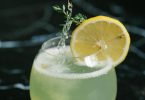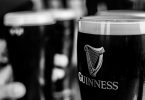Report emphasises excise tax differential
Ireland also has the distinction of having the highest excise tax on wine in the EU and the third-highest excise in the EU28 on spirits.
Thus Ireland has the second-highest excise duty on alcohol overall in the European Union according to a new DIGI-commissioned report examining excise duties across the EU.
The research was undertaken by Dublin City University Economist Tony Foley who found that the UK’s alcohol tax level is only 83.7% of the Irish level in his report, Tax on Alcohol: Ireland vs the EU.
In taking the excise rate per HectoLitre of Pure Alcohol (HLPA) here and comparing it with that of the UK he found that where the UK pays €3,370 (as of Sterling exchange rates at February 2017) per HLPA of spirits, we pay €4,527.
Where the UK pays €3,078 per HLPA for wine, we pay €3,862 and where the UK pays €2,238 for beer per HLPA, we pay €2,255.
The report also finds that where the UK cider excise rate is €47.35 per HectoLitre of product (up to 7.5% ABV), for Ireland this stands at €94.66 for ciders with ABVs between 2.9% and 5.9%.
Consequently, for cider up to 6% ABV, the Irish excise rate is 99.5% greater than the UK rate.
The report goes on to point out that, “The top four alcohol excise levels per HLPA of €3,614 to €2,895 (Finland, Ireland, Sweden and the UK) are substantially higher than the next four highest countries €1,394 to €1,330 (Denmark, Belgium, Estonia and Greece)”.
It adds, for example, that, “Germany’s composite alcohol excise per HPLA is €500 or 14.5% of the Irish level”.
The report looks at the alcohol excise rates on a number of standard drinks across the EU28 too using constant (Irish) measures of volume such as the pint of beer.
It finds that the excise on a standard measure of whiskey in a bar is 60 cent in Ireland compared to 64 cent in Finland, 47 cent in the UK and 8 cent in Bulgaria.
That on a pint of lager in a bar here is 55 cent compared to 78 cent in Finland, 55 cent in the UK and 5 cent in Bulgaria. A pint of stout in an Irish bar attracts excise of 54 cent where it’s 77 cent in Finland, 54 cent in the UK and 5 cent in Bulgaria.
A 187ml glass of wine in an Irish bar or restaurant attracts 80 cent in excise where it attracts 64 cent in the UK and zero in 14 of the EU28 countries.
A 70cl bottle of whiskey in an Irish off-licence carries €11.92 excise tax where this is €12.75 in Finland, €9.44 in the UK and €1.57 in Bulgaria.
Finally, a 75cl bottle of wine in an Irish off-licence attracts excise tax at €3.19 while in the UK this figure stands at €2.54.
Tony Foley’s report also compares prices in the Irish on- and off-trades with those that apply in Germany for example, for the above items, to emphasise the difference in price to the consumer in Ireland and Germany.
The report summarises, “The quantitative or monetary gap between Ireland and the large majority of other EU economies on alcohol excise is substantial. Fourteen EU economies have no excise on wine while Ireland has the highest excise on wine in the EU”.
Tony Foley later stated, “Ireland’s alcohol excise duty is 150% higher than 24 of the other 27 EU member states”.
In a commentary on the report DIGI Chair and Heineken Ireland Chief Executive Maggie Timmoney states, “22 of our EU peers impose an excise rate on beer that is less than half of Ireland’s. If we applied Germany’s rate to a pint of lager served here, excise would be five cents instead of 55 cents, a direct reduction of 50 cents. 14 of the 28 EU member states impose no excise on wine, yet we impose one that is 25% higher than any other EU country.”
She pointed out that Ireland’s drinks industry employs 92,000 people nationwide; the wider hospitality sector employs 204,000 people or 10% of the Irish workforce in both cities and rural towns and villages. The hospitality sector purchases €1.1bn worth of Irish inputs annually and exports €1.25 billion worth of produce every year.
She also pointed to the difficulties ahead with Brexit: “UK tourists make up 40% of our total visitors. With the fall in the value of Sterling, there were 49,000 fewer between December 2016 and February 2017 compared to the same period in the previous year. This number may well drop further as the full impacts of EU withdrawal materialise,” she warned.
Ireland’s excise tax is ‘an anti-competitive tax on one of Ireland’s largest employers and risks Ireland becoming less attractive to investment and overseas visitors,’ according to DIGI.
Through the Support Your Local campaign, it believes that the government should be reviewing the taxation policy levers that could be used to support this vital sector and it will be make formal proposals to this effect in the coming weeks, she concluded.








